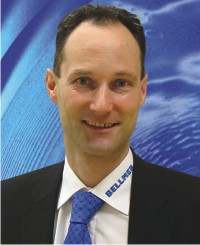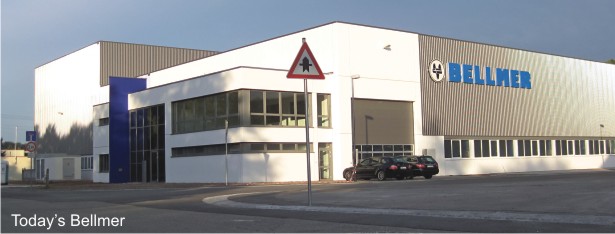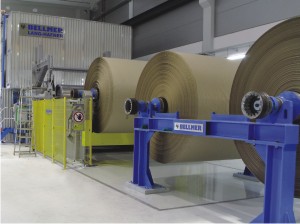 Regarded as a technological heavyweight, Germany has always fascinated the world with its engineering capabilities. Over the years, it has developed a flexible and effective way of moving its best ideas from research centres to the factory floor. A major factor behind Germany’s success in this field is its ability to tap homegrown scientific research and expertise to move up the technological ladder, concentrating on innovative products and processes. Upholding this tradition, Carl Bellmer formed Bellmer in 1842.
Regarded as a technological heavyweight, Germany has always fascinated the world with its engineering capabilities. Over the years, it has developed a flexible and effective way of moving its best ideas from research centres to the factory floor. A major factor behind Germany’s success in this field is its ability to tap homegrown scientific research and expertise to move up the technological ladder, concentrating on innovative products and processes. Upholding this tradition, Carl Bellmer formed Bellmer in 1842.
As a personal and high-performance machine and plant manufacturer, Bellmer not only delivers state-of-the-art products but also offers solutions for almost any case of application.
The Paper Mart team (PM) recently interviewed Erich Kollmar, President of the Bellmer Group, to gain deeper insights into the strong roots of the company and its commitment to innovation.
Here are some excerpts from this engaging interaction.
PM: Tell us about the history and achievements of Bellmer
Erich Kollmar: It all began with the purchase of a paper mill by Carl Bellmer in Niefern in 1842. Through courageous visions, entrepreneurial feel, persistence and team work, Bellmer has become a specialist in the fields of paper technology and separation technology.
Bellmer, a machine and plant builder located in Niefern, Germany, is currently run by the sixth generation: Martin, Erich and Philipp Kollmar. Customers from the pulp and paper sector or from the line of industry dealing with thickening or dewatering of all sorts of suspensions from the environmental, paper or food technologies respectively have been benefiting from our experience and expertise for more than 172 years. Today Bellmer is a specialist, starting from the planning up to the turnkey implementation of machines and plants for the manufacturing of paper and board. We offer the advantage of supplying all components for paper production from a single source, while our worldwide subsidiaries provide sound advice and fast response to any on-site emergency.
Here is the timeline of the company’s major milestones.
1880 Launch of the Bellmer bleaching engine; breakthrough of the industrial chemical bleaching process
1927 Construction of the first chlorating tower for continuous stock treatment
1968 Bellmer builds the world´s largest leather fibreboard plant
1972 Beginning of the new product range of Separation Technology
1991 First fully automatic Pope Reel
1995/1998 Acquisition of the machine companies Bruderhaus and Reinhard
2000 TurboDrain™ Recovery for white water filtration
2001 Launch of the new shoepress TURBOPress™
2004 World record: Supply of TURBOReeler™ featuring a diameter of 4.2 metres
2005 High-frequency shaking with the TURBOShaker™
2008 Acquisition of the Lang-Hafner company
2009 Acquisition of Kufferath Machinery
2010 Acquisition of Bellmer Iberica
2013 Acquisition of Vaahto Paper Machinery Oy
PM: How do you ensure quality at Bellmer?
EK: Quality for us is definitely not just a catchword. We distinguish three important types of qualities: The first one is paper quality for our customers. It’s our aim to deliver solutions that improve the paper quality to the optimum. The second type of quality is the quality of our products. We believe that manufacturing know-how is the key factor behind success in view of more and more reduced project-processing time and the highest quality. This is the reason why we effectually adhere to Germany as our location. The entire manufacturing and pre-assembly processes of our paper and board machines are carried out at Bellmer. Spacious and newly-erected assembly halls within close proximity to the company ensure enough capacity. Short ways enable us to implement quick and flexible production. And the third type of quality includes our project execution from sales meeting to start-up. Investments in a new machine technique are our customer’s full advantage. Supplying high-quality products on the promised date is our top priority.
PM: What is the role of research and development in ensuring quality? Do you think you need to invest more in research and development in your Indian operations?
EK: Research and development at Bellmer is closely combined with our understanding of quality. It´s a process in which we take care of the three types of quality. Bellmer also works in close cooperation with its product partners; for example, for the development process of our TURBOPress™ shoepress. The R&D process is always a target-oriented process for us. Our products have to convince customers worldwide, for every project.
PM: What are Bellmer´s success factors? Where does its core strength lie?
EK: Our goal is “return-order-customers” – customers who have been satisfied with our products and project management and come back to us for another rebuild or modernisation. Our core strength is our teamwork – good cooperation between us and our customers. And if we receive an order by word-of-mouth communication, we can be sure to have chosen the right strategy.
Bellmer is a specialist – starting from the planning up to the turnkey implementation of machines and plants for the manufacturing of paper and board. We offer the advantage of supplying all the components of paper production, from a single source, while our worldwide sub-sidiaries are able to provide sound advice and fast response to any on-site emergency.
PM: When did Bellmer become active in India? Are you satisfied with the performance of Bellmer in India?
EK: In the 1980s, we started with a paper sludge dewatering project with our Bellmer WinklePress™ in a mill in Tamil Nadu. Thereafter, we sold TurboDrain™ for the recovery of expensive filler like TiO2, Dandy Rolls and TurboShaker.
In 2012, we installed our Turbo FilmSizer in Kuantum Paper Mills Ltd., Punjab. It was commissioned within a very short period and customer is very satisfied with our equipment because they are able to enter the growing segment of copier paper on the Indian market.
Very recently, we did a few projects on the sludge-handling side. Our operations in India are handled by Brown Multitech Pvt Ltd.
We are satisfied today, but as you know, development always has to go on and surely we would like to extend our success… .
PM: What is Bellmer´s role in environment protection? How do you define “green technology”?
EK: We are a trend setter. Bellmer realised the challenge and importance of environmental protection many years ago. For that reason, we created our second field of activity, our Separation Technology division. With the innovation of the world´s first belt press WinklePress™, Bellmer became the first company to launch a tool that used the operating principle of belt filter presses for the dewatering of sewage sludge.
Of course, we have optimised this bestselling unit over the years to adapt to changing sludge composition and requirements. The result is the WinklePress™ Green, designed for more environment-friendly and cost-efficient sludge dewatering. It’s the same with our new belt thickener TurboDrain™ Green. Bellmer has introduced the first belt thickener to specifically target at sustainable resource conservation. Water consumption can be reduced by 30%, energy costs by further 10% and polymer consumption by 20%.
And sustainability has been our credo long before it became a buzzword. Without the marketing strategy of a sustainability report, our machines have been in operation for more than 20 years.
PM: What are your future targets?
EK: To get even closer to those customers who appreciate our know-how and the services we offer.
PM: Can you shed some light on your recent project done in India for environment protection? What is the scope of supplies and how will it benefit them in the long run?
EK: We have done projects for various types of sludge (primary, DIP, primary+ secondary mix) and with concepts of WinklePress™ as well as screw press.
- A well-known paper mill on the south eastern coast of India opted for Bellmer’s Separation Technology. Very shortly, a Cascade consisting of the belt thickener TurboDrain™ TD Green 3C and the WinklePress™ Green WPN I 4 including the special high-pressure section will be installed. 25 to 35 % DS has been the final dry solids content before the installation. The disposal of each ton of sludge involves high costs. The alternative process of sludge incineration requires a final dry solids content of minimum 40% DS. And this has advantages: The paper mill will save the costs for disposal and the fuel for the power station. After an inquiry to different suppliers of sludge dewatering equipment, the mill decided in our favour. A Bellmer sludge dewatering specialist visited the mill to carry out a detailed analysis and tests. The achieved high dry solids content combined with the economical operation has convinced the team of the paper mill.
- A couple of months ago, we commissioned two identical sludge-drying lines at a major paper mill in northern India. In total, 64 tons of BD sludge coming from 4 clarifiers is dewatered. Each line consists of one disc thickener AKSE S 175/07 which pre-thickens the sludge from 1% to approx. 13% before entering our screw press AKUPRSS BX 625 LL-H which then dewaters the sludge to a final dryness of + 60 %. Dried sludge can then be burned in the mill’s boiler. Each line is equipped with an automatic instrumentation and control system enabling the system to operate independently.
- Another mill, which manufactures newsprint and writing and printing paper from 100 de-inked recycled fibre has ordered our equipment to dry their DIP sludge. The aim is to achieve 60% final dryness and use dried sludge as fuel in the boiler. For economic reasons, this mill has plans to stop their existing decanters after installing our disc thickener and screw press arrangement. You may know that our disc thickener is very energy efficient and operates at very low operating costs. These disc thickeners have a little maintenance and consumables compared to the centrifuges. Capacity of this installation is about 24 TPD bone dry sludge.







